3D Robotics Cloverleaf Antenna Kit 5.8G 3C-4C Leaf Straight Connector
|
The 5.8GHz cloverleaf antenna from 3d robotics are antennas tuned to 5.8GHz. They include a 3-petal and 4-petal version as shown in Figure 1: 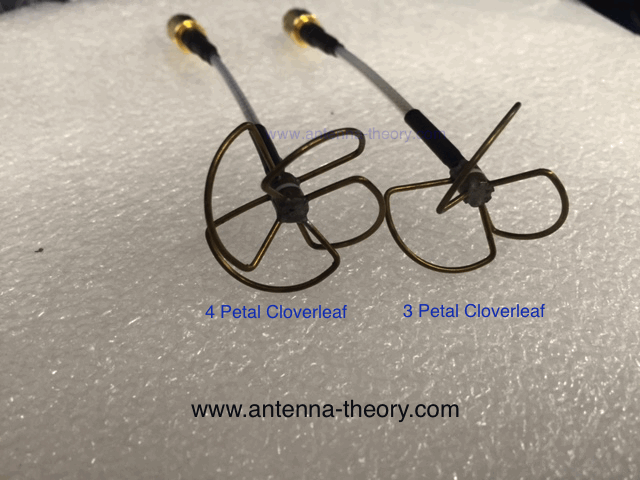 Figure 1. 3D Robotics Cloverleaf Antennas. I measured the VSWR for these antennas, which is shown in Figure 2: 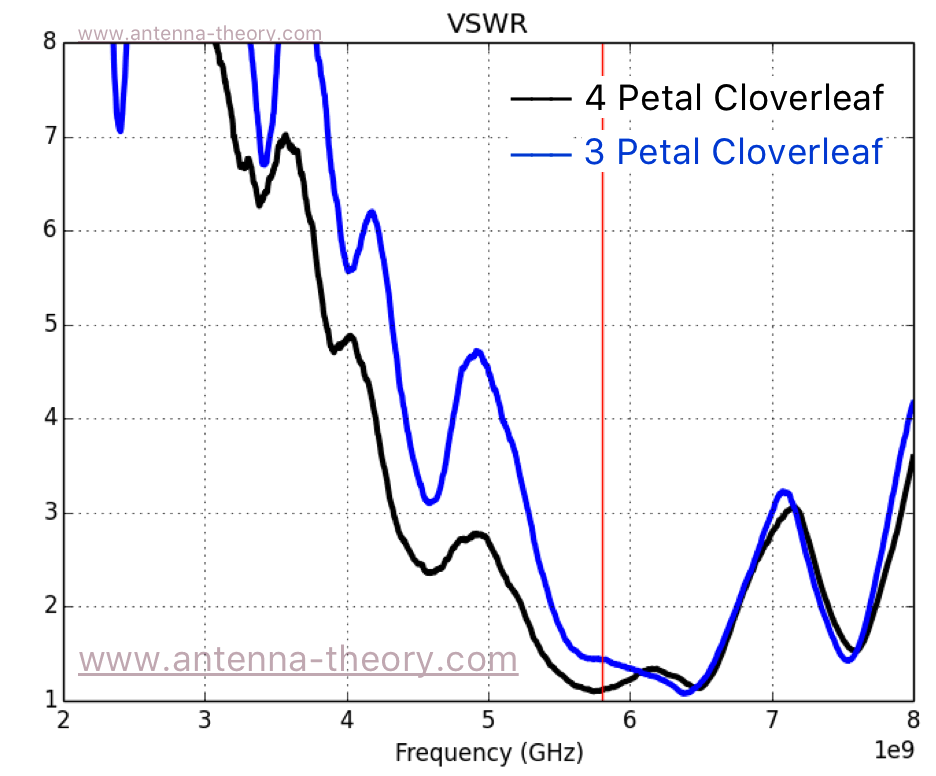 Figure 2. VSWR for the 3D Robotics Cloverleaf Antennas. From Figure 2, you can see the VSWR bandwidth is larger for the 4-petal version. The VSWR at 5.8GHz is 1.12 for the 4-petal version, and about 1.4 for the 3-petal version. The radiation pattern for the 3d robotics cloverleaf antennas at 5.8GHz is shown in Figure 3 (the 3- and 4-petal versions are more or less the same). Note that the cloverleaf antenna axis (the coaxial cable) lies along the z-axis in Figure 3. 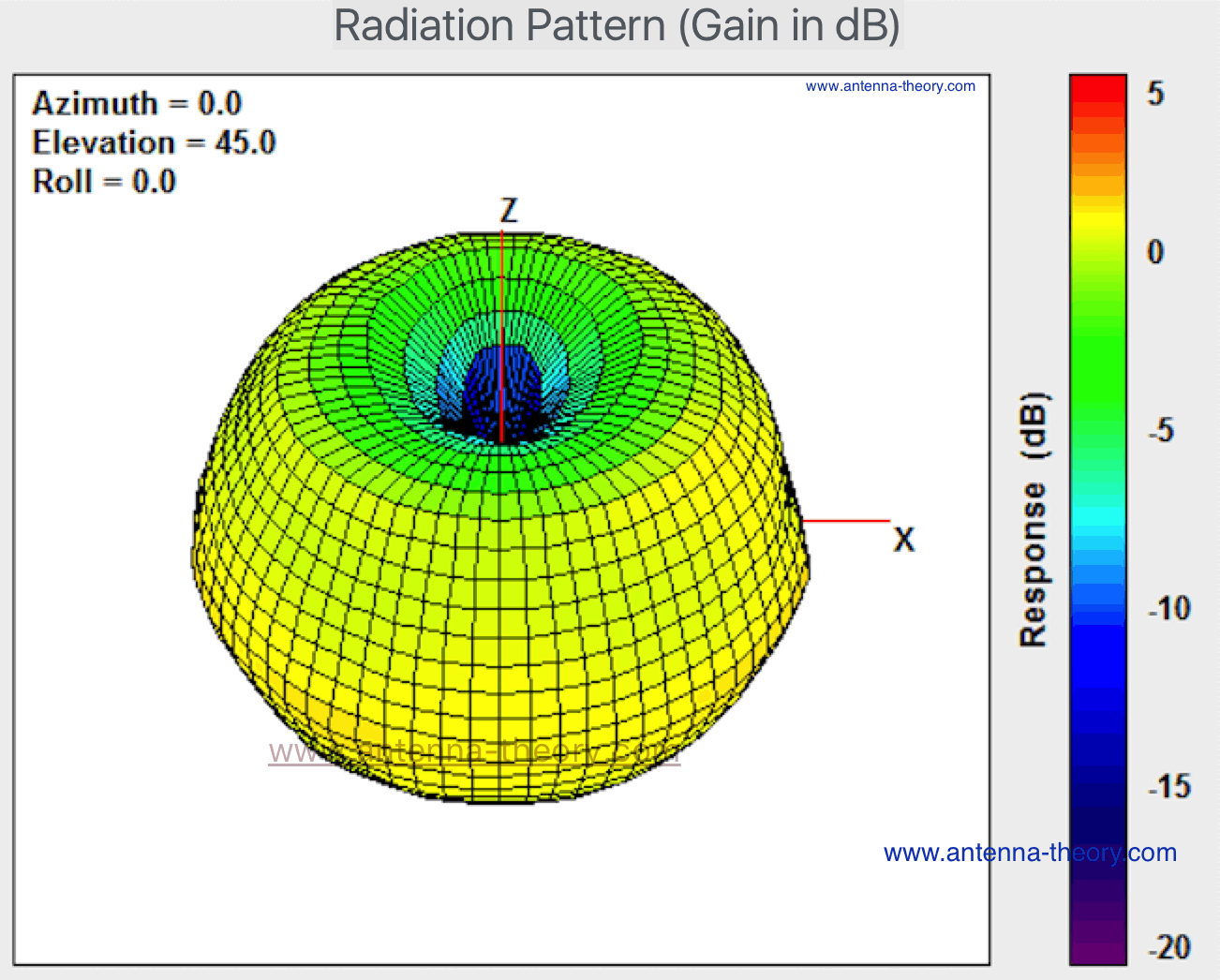 Figure 3. Radiation Pattern for the 3D Robotics Cloverleaf Antennas.
Next, we check the circular polarization of the cloverleaf. We can do this by looking at the vertical and horizontal components of the E-field as we rotate the device, as described in the antenna measurements section. Specifically, I orient the cloverleaf antenna such that I am measuring the peak direction of radiation (broadside to the cloverleaf), and rotate the device 360 degrees. If the antenna was perfectly circularly polarized, I should see constant E-field components. The degree to which the E-field components deviate is known as the axial ratio. An axial ratio of 0 dB is perfect circular polarization, and the higher the value the more elliptical the polarization is. An axial ratio that is very large is indicative of linear polarization. In Figure 4, we show the E-fields as the 3d robotics cloverleaf antenna is rotated at f=5.8GHz.
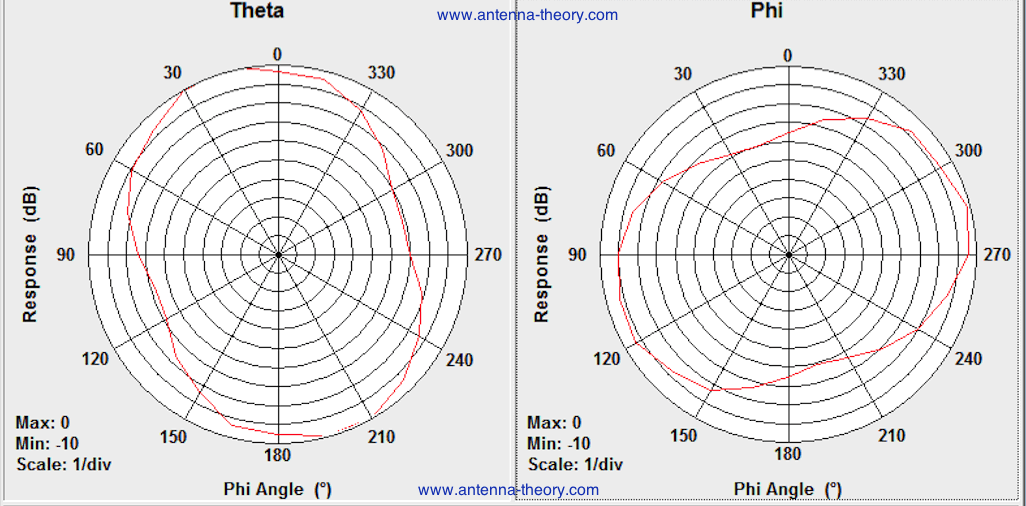 Figure 4. Axial Ratio and Circular Polarization Measurement for the 3D Robotics Cloverleaf Antennas. In Figure 4, the axial ratio is about 3.8 dB. This means the cloverleaf close to circularly polarized, but is not perfectly circularly polarized (this is elliptical polarization). Finally, the antenna efficiency of the 3d robotics cloverleaf is shown in Figure 5. The efficiency is very high (-0.35 dB or 92%), so no concern there:
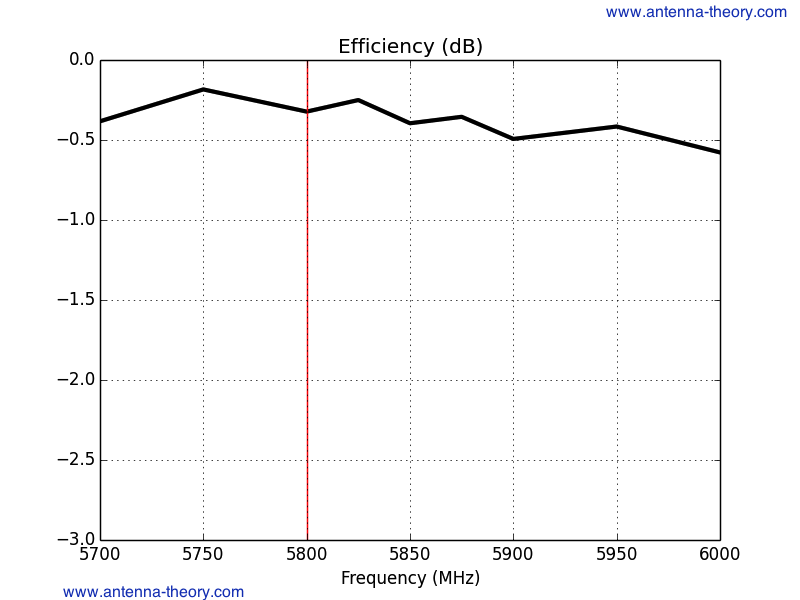 Figure 5. Antenna Efficiency for the 3D Robotics Cloverleaf Antennas. The peak antenna gain of the 3d robotics cloverleaf antenna was measured to be 2 dB at 5.8 GHz. You can find the 3d Robotics Cloverleaf Antenna on Amazon:
Another competitor 5.8GHz cloverleaf antenna is a version by fatshark spironet cloverleaf antenna set.
Antenna Theory (Home)
|